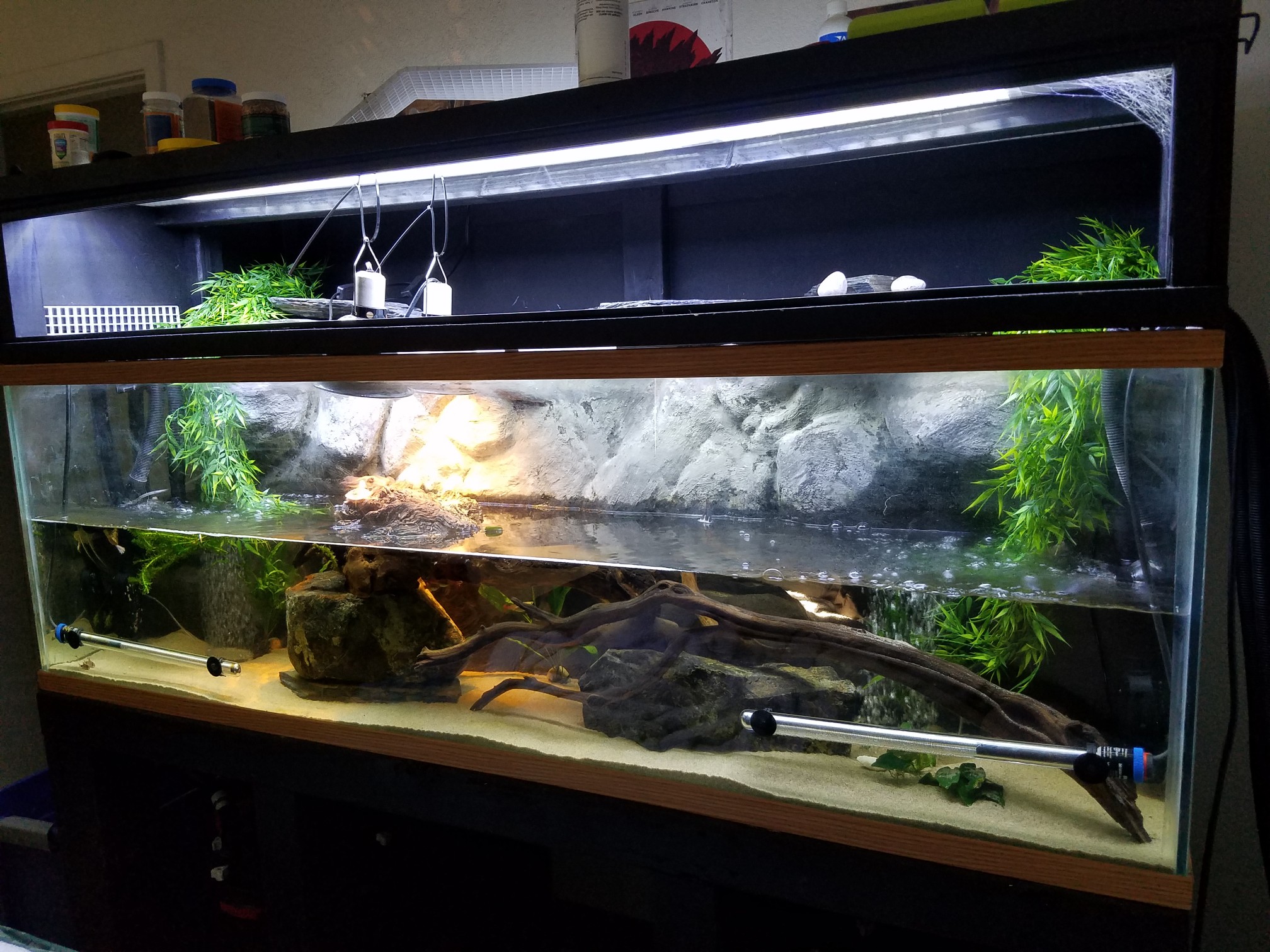When choosing a turtle tank, it is essential to consider the size requirements of your pet. Turtles need sufficient space to swim, bask, and explore, just like they would in their natural habitat. Additionally, a properly sized tank promotes good health and reduces stress for your pet turtle. In this article, we will discuss how big a turtle tank should be and the factors that determine the appropriate size for your turtle’s habitat.
Size Guidelines for Turtle Tanks
The size of a turtle tank depends on the species and size of your turtle. It’s important to research your specific turtle species to ensure you provide the optimal tank size. However, as a general guideline, a turtle tank should meet the following minimum size requirements:
| Turtle Species | Minimum Tank Size |
|---|---|
| Painted Turtle | 20-gallon tank for one turtle, 10 gallons per additional turtle |
| Red-Eared Slider | 40-gallon tank for a juvenile, 75-gallon tank for an adult |
| Musk Turtle | 20-gallon tank for one turtle, 10 gallons per additional turtle |
| Map Turtle | 30-gallon tank for one turtle, 10 gallons per additional turtle |
| Snapping Turtle | 75-gallon tank for a juvenile, 150-gallon tank for an adult |
Keep in mind that these are just minimum requirements, and providing a larger tank is always better. Turtles, especially as they grow, will appreciate more space to swim, climb, and engage in natural behaviors.
Factors Affecting Tank Size
Several factors can influence the required size of your turtle tank:
- Turtle Size: Larger turtles need bigger tanks to accommodate their size. Don’t forget that turtles grow significantly over time, so consider the adult size when determining tank dimensions.
- Species: Different turtle species have varying space requirements. Some species are naturally more active and require larger tanks to swim and explore.
- Number of Turtles: If you have multiple turtles, the tank size should increase to meet the needs of all individuals. Providing enough space ensures that they have ample space for swimming and separate basking areas.
- Vertical Space: Turtles enjoy climbing and basking, so a tank with adequate vertical space allows them to engage in these natural behaviors. Consider taller tanks or provide platforms, ramps, and floating docks.
- Water Depth: Aquatic turtles require varied water depths depending on their species. This means the tank should be deep enough for swimming and diving activities.
- Additional Equipment: Don’t forget to account for any additional equipment, such as filters, heaters, basking spots, and hiding places. These items take up space in the tank and may require a larger tank size.

Credit: reptifiles.com
:strip_icc()/red-eared-slider-care-tank-and-supplies-1238360-FINAL-5ba8ddc3c9e77c0050cf2a71.png)
Credit: www.thesprucepets.com
Turtle Tank Maintenance
Once you have determined the appropriate tank size for your turtle, it is crucial to maintain a clean and healthy habitat for your pet. Regular tank maintenance includes:
- Performing partial water changes every 1-2 weeks to maintain water quality.
- Cleaning the tank substrate, rocks, and decorations regularly to prevent the buildup of waste or bacteria.
- Checking and adjusting the temperature and lighting to meet your turtle’s requirements.
- Monitoring the filtration system to ensure it is functioning properly and providing adequate water circulation.
Remember, a clean and well-maintained tank promotes good health and longevity for your pet turtle.
Conclusion
Providing an adequately sized turtle tank is essential for the well-being of your pet. The tank size should meet the minimum requirements based on the species and size of your turtle. Considering factors such as turtle size, species, number of turtles, vertical space, water depth, and additional equipment will help determine the appropriate tank size for your pet. Always strive to provide a larger tank whenever possible to ensure your turtle has ample space to thrive and exhibit natural behaviors. Lastly, regular tank maintenance is crucial to maintain a clean and healthy habitat for your beloved pet turtle.






Leave a Reply